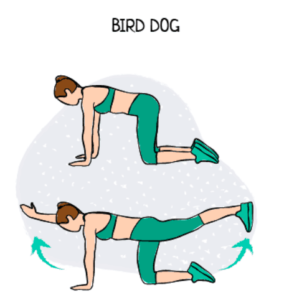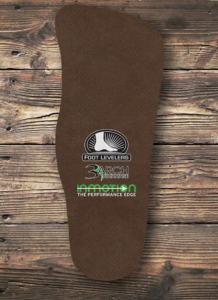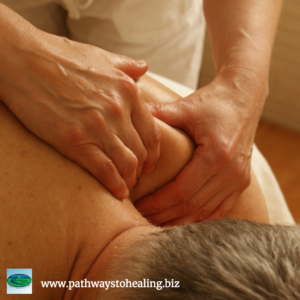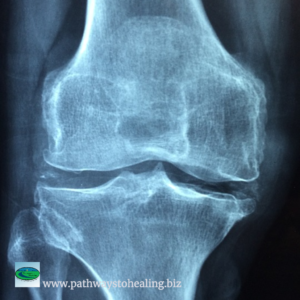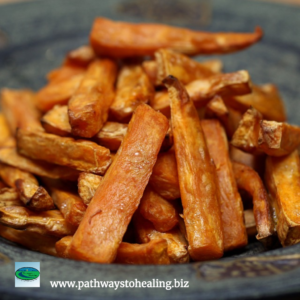By Dr. Alyssa Musgrove – Pathways to Healing
Last week, I shared a few of my favorite salad recipes to help you take advantage of the variety of spring and  summer produce coming into season. Salads are a great way to boost your vegetable and nutrient intake, but it’s important to point out that how you dress your salad is just as important as what you put in it. Store-bought salad dressings can be a convenient option, but they often can turn a healthy choice into a calorie-dense, preservative-laden health bomb.
summer produce coming into season. Salads are a great way to boost your vegetable and nutrient intake, but it’s important to point out that how you dress your salad is just as important as what you put in it. Store-bought salad dressings can be a convenient option, but they often can turn a healthy choice into a calorie-dense, preservative-laden health bomb.
Here are just a few reasons why you should consider skipping the store-bought stuff:
Added sugar. Ever sprinkle a couple teaspoons of sugar over that bowl of leafy greens before digging in? If you’re using a store-bought dressing, you likely are. Sugar is a common ingredient in store-bought dressings, often hiding under the name of high fructose corn syrup or dextrose. Added sugar causes blood sugar spikes (which fuel cravings later on), depletes nutrients in the body and encourages weight gain.
Poor quality oils. It’s nearly impossible to find a store dressing made with high-quality, 100 percent extra-virgin olive oil. Rather, to keep production costs down, manufacturers often use canola, corn, sunflower or soybean oil. These cheap oils easily become rancid (which causes inflammation in the body) and have been shown to increase cholesterol.
Additives. The ingredient list of most salad dressings includes a litany of gums, thickeners, colors, flavors and preservatives. Even in small amounts, these chemical additives are toxic to the body. It’s always a good idea to avoid unnecessary additives – especially if you have food sensitivities.
Fortunately, making your own salad dressing couldn’t be easier. A homemade salad dressing not only tastes better, but it can also be whipped up in a matter of minutes – many times with ingredients you already have on hand. Here are a few of my favorite recipes to get you started:
Basic Balsamic Vinaigrette
3 tablespoons balsamic vinegar
1 tablespoon Dijon mustard
1 garlic clove, minced
½ cup olive oil
Salt and freshly ground black pepper
In a small bowl, combine the vinegar, mustard and garlic. Add the oil in a slow, steady stream, whisking continuously. Season with salt and pepper to taste.
Maple-Dijon Dressing (Courtesy of “The No Meat Athlete Cookbook”)
¼ cup apple cider vinegar
2 teaspoons Dijon mustard
¼ teaspoon black pepper
2 tablespoons maple syrup
2 tablespoons olive oil (if doing oil free use 2 tablespoons of broth or water)
salt to taste
Combine the vinegar, maple syrup, mustard and pepper in a small jar with tight fitting lid. Whisk in the oil or broth in a slow, steady stream. Season with salt to taste. Refrigerate for up to 5 days.
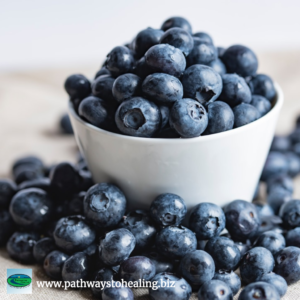 Blueberry-Walnut Vinaigrette (Courtesy of “The No Meat Athlete Cookbook”)
Blueberry-Walnut Vinaigrette (Courtesy of “The No Meat Athlete Cookbook”)
¼ cup apple cider vinegar
¼ cup blueberries
¼ cup walnut pieces
1 tablespoon minced shallot or red onion
½ teaspoon dired thyme
½ teaspoon maple syrup
1-2 tablespoons water (optional)
salt and black pepper to taste
Puree the vinegar, blueberries and half of the walnuts in a blender until smooth, thinning it with 1 or 2 tablespoons of water if desired. Finely chop the rest of the walnuts. Transfer to a jar with a tight-fitting lid and add the shallot or red onion, thyme and maple syrup. Shake to combine and seas with salt and pepper. Refrigerate for at least a few hours and up to 3 days to allow the flavors to meld.
Lemon-Tahini Dressing (Courtesy of “The No Meat Athlete Cookbook”)
¼ cup fresh lemon juice (about 2 lemons)
1 teaspoon maple syrup
1 small garlic clove, chopped
½ cup tahini
¼ teaspoon salt
1/8 teaspoon black pepper
¼ to ½ cup water
Pulse the lemon juice, maple syrup, garlic, tahini, salt and pepper in a high-speed blender to combine. Slowly add the water, starting with ¼ cup until it reaches your desired consistency. Refrigerate in an airtight container for up to 5 days.
 Pathways to Healing specializes in holistic chiropractic care. Dr. Alyssa Musgrove draws on a variety of techniques, including chiropractic, kinesiology, nutrition, food allergy testing and lifestyle counseling to assist clients in achieving optimal health and wellness in one setting. Pathways to Healing is located at 1022 Founders Row, Lake Oconee Village, Greensboro. The office can be reached at 706-454-2040.
Pathways to Healing specializes in holistic chiropractic care. Dr. Alyssa Musgrove draws on a variety of techniques, including chiropractic, kinesiology, nutrition, food allergy testing and lifestyle counseling to assist clients in achieving optimal health and wellness in one setting. Pathways to Healing is located at 1022 Founders Row, Lake Oconee Village, Greensboro. The office can be reached at 706-454-2040.

